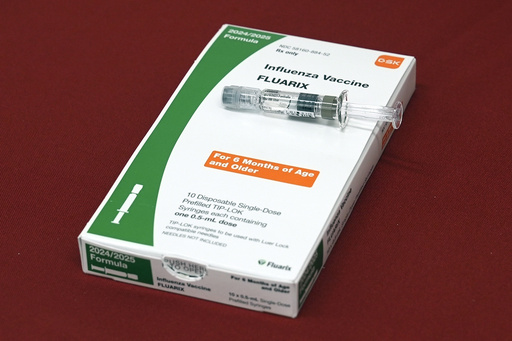The U.S. is experiencing one of its most severe winter virus seasons in over a decade, with flu activity reaching levels not seen since the 2009-2010 season. According to data released Friday by the Centers for Disease Control and Prevention, flu-like symptoms drove a higher percentage of doctor’s office visits last week than at any point in the past 15 years.
While other respiratory infections can mimic the flu, COVID-19 cases appear to be on the decline based on hospital data and CDC projections. Another common winter virus, RSV, also seems to be fading.
Schools forced to close amid flu outbreaks
The flu has disrupted schools in several states, leading to temporary closures. In Texas, the Godley Independent School District, which serves 3,200 students near Fort Worth, shut down for three days last week after 650 students and 60 staff members called in sick.
Jeff Meador, a district spokesman, described it as the worst flu season he could remember.
The CDC estimates that this flu season has already resulted in at least 24 million illnesses, 310,000 hospitalizations, and 13,000 deaths, including 57 children. Flu season typically peaks in February, meaning cases could continue rising in the coming weeks.
Flu activity remains high across the country
A total of 43 states reported high or very high flu activity last week, with the most intense outbreaks occurring in the South, Southwest, and western states.
Despite the growing concern, the CDC declined to allow an Associated Press reporter to speak with a flu expert about the current surge. The Trump administration has placed a temporary hold on health agency communications, limiting access to routine interview requests.
Vaccination rates remain stagnant
Health officials continue to recommend that everyone six months and older receive a flu vaccine each year. However, vaccination rates remain unchanged from last winter.
About 44 percent of U.S. adults have received a flu shot this season, but coverage among children has dropped to 45 percent, down from the usual 50 percent. COVID-19 booster rates are also low, with only 23 percent of adults and 12 percent of children up to date on vaccinations.
The effectiveness of this season’s flu vaccine has not yet been reported by government health agencies.
Health officials monitor emerging flu strains
Testing has shown that most flu cases are caused by two seasonal strains: Type A H1N1 and Type A H3N2. However, health officials are closely watching a third strain, Type A H5N1, commonly known as bird flu, which has infected millions of animals but only 67 people in the U.S. so far.
Preventive measures to avoid illness
Doctors advise taking extra precautions to reduce the spread of flu and other seasonal viruses. Avoid touching your eyes, nose, and mouth, as germs can spread this way. Wash hands frequently with soap and water, disinfect high-touch surfaces, and limit close contact with people who are sick to reduce the risk of infection.




